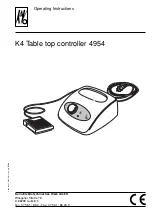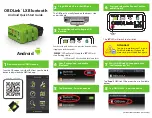
2D Goniometer SmartLead User Manual
27
(Rev D January 2020)
within the limits of the sliding endblock and without changing the relative angles between them, then
the outputs remain constant.
In certain applications, when mounting the goniometer across the joint, (for example when measuring
flexion/extension of the wrist as shown in Fig. 3), the center of rotation of the sensor measuring
element does not coincide with the center of rotation of the joint. As the joint moves through a
determined angle, the relative linear distance between the two mounting positions will change. To
compensate for this, all sensors are fitted with a sliding endblock that permits changes in linear
displacement between the two endblocks along axis ZZ without the measuring element becoming
overstretched or buckled (refer to Fig. 4). In the free or unstretched position, the distance between
the two endblocks is L1. If a light force is applied pushing the endblocks away from each other, this
length will increase to a maximum of L2. When the light force is removed the distance between the
two endblocks will automatically return to L1.
If a light force is now applied pushing the two endblocks linearly towards each other the only way the
distance L1 can decrease in length is by the measuring element buckling as shown in figure 5. This
buckling is detrimental to the accuracy of the “SG” series and “Q” series sensors (this does not apply
to the F35 goniometer).
Fig. 1
Angle Measurement
Linear Movement













































